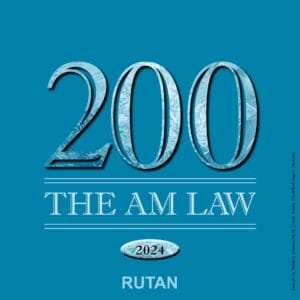In recent years, the California Legislature has continued to enact housing related bills in an effort to combat the housing crisis and provide for more affordable housing throughout the State. The 2023 legislative session was no different. In the fall of 2023, Governor Gavin Newsom signed numerous bills with the goal of providing for more housing in the near future. In total, a package of more than 50 housing-related bills was enacted. This e-Alert summarizes a few of the most important bills from this package including: Senate Bill (“SB”) 423, Assembly Bill (“AB”) 1449, AB 1287, AB 1633, and AB 821. Although these are the only bills addressed in this E-Alert, there are several others that could have significant impacts to developers. Please reach out to a Rutan attorney to learn more about any of the housing-related bills passed during the 2023 legislative session.
Senate Bill 423 – Streamlined Approvals for Certain Multi-Family Housing Developments
SB 423 extends and expands the provisions of SB 35 that were set to sunset in 2026. SB 35 provides for streamlined ministerial approval of housing developments in cities that have not met their Regional Housing Needs Allocation (“RHNA”). In addition to extending SB 35’s provisions by 10 years, SB 423 will make more multi-family and mixed-use housing developments eligible for the streamlined ministerial approval process. Previously, SB 35 only applied to municipalities that failed to issue enough building permits to meet their RHNA targets. Under SB 423, SB 35’s streamlining provisions will also apply to municipalities that have not adopted a housing element found to be in substantial compliance with housing element law by the State Department of Housing & Community Development (“HCD”). SB 35 also did not apply to developments in the Coastal Zone. However, SB 423 removes this exception, extending SB 35 to certain qualifying developments in the Coastal Zone.
Additionally, SB 423 amends the labor requirements under SB 35. SB 35 required prevailing wage to be paid on streamlined affordable housing projects that contained more than 10 units and were not 100% affordable. Under SB 423, labor requirements will now be determined by the number of market-rate units in the housing development. If the development contains 10 or fewer market-rate units, there are no additional labor requirements. For developments with 10 to 50 units, the developer must pay prevailing wage. And for projects with more than 50 units, the developer must pay prevailing wage in addition to employing apprentices and providing healthcare for workers. Finally, housing developments over 85 feet in height must use a “skilled and trained workforce.”
Assembly Bill 1449 – New CEQA Exemption for Certain Affordable Housing Projects
AB 1449 introduces a new exemption to the California Environmental Quality Act (“CEQA”) for affordable housing projects that meet specific criteria. This criteria includes: (i) at least two-thirds of the project’s square footage must be designated for multi-family residential use, (ii) except for manager’s units, all residential units must be reserved for lower-income households, (iii) compliance with construction labor standards including prevailing wage, and (iv) adherence to specified site eligibility criteria. Under AB 1449 this exemption is only temporary and set to sunset on January 1, 2033.
The bill’s site requirements encompass locations: (1) within a city containing a portion of an urbanized area or urban cluster; (2) within unincorporated areas where the parcel(s) is wholly within an urbanized area or cluster; (3) within one-half mile walking distance of a high-quality transit corridor or a major transit stop; (4) within a very low vehicle travel area (e.g., within an urbanized area where existing residential development generates vehicle miles traveled (“VMT”) per capita that is below 85 percent of either regional or city VMT per capita); and (5) proximal to six or more specified amenities. Proximity to amenities is defined based on the distance to transportation hubs and essential services, as further discussed in Public Resource Code Section 21080.40(a)(3). Lastly, parcels that are developed with urban uses must be adjacent to at least 75% of the project site’s perimeter.
Assembly Bill 1287- Additional Density Bonus, Incentives, and Concessions
AB 1287 enacts amendments to the Density Bonus Law. First, the bill clarifies that “maximum allowable residential density” means the greatest number of units allowed under the zoning ordinance, specific plan, or general plan land use element. Additionally, if a range of densities is permitted, it means the greatest number of units allowed for by the range.
Second, the bill allows for four incentives or concessions for projects that include at least 16% of the units for very low income households or at least 45% for persons and families of moderate income in a development in which the units are for sale. The bill would also increase the incentives or concessions for a project in which 100% of all units are for lower income households, as specified, from four to five.
Third, the bill requires local agencies to grant an additional density bonus (based on a specified sliding scale) where: (1) the applicant proposes a housing development that conforms to certain requirements previously required by the Density Bonus Law, (2) the applicant agrees to include additional units affordable to very low income households or moderate-income households, and (3) the housing development conforms to previously required affordability requirements, and provides 24% of the total units to lower income households, 15% of the total units to very low income households, or 44% of the total units to moderate-income units.
Assembly Bill 1633 – Expansion of Housing Accountability Act
AB 1633 amends the Housing Accountability Act (“HAA”) to provide an additional avenue for developers to challenge a local agency’s decision to delay or block infill housing development under the California Environmental Quality Act (“CEQA”). Under the HAA, a local agency is prohibited from disapproving or reducing the density of a housing development project unless certain findings are made. AB 1633 expands the HAA’s definition of disapproving a housing development project to include situations where the local agency (1) “fails to make a determination of whether the project is exempt from [CEQA]” or (2) “fails to adopt a negative declaration or addendum for the project, to certify an environmental impact report for the project, or to approve another comparable environmental document…” In either of these situations, AB 1633 provides the applicant with a statutory right to bring a lawsuit under the HAA if the applicant provides written notice to the agency of one of the above failures and the agency does not make a lawful determination within 90 days of the applicant’s notice.
AB 1633 is limited to certain qualified housing development projects that meet the following criteria: (1) it is located in an “urbanized area” and meets other related criteria; (2) it has a density of at least 15 units per acre; and (3) there is substantial evidence that the project is eligible for an exemption from CEQA or a negative declaration, addendum, environmental impact report, or comparable document has been prepared that satisfies the requirements of CEQA.
Assembly Bill 821 – Conflict between General Plan & Zoning Ordinance
AB 821 sets out new procedures a local agency must follow where it has a zoning ordinance that is inconsistent with its general plan.
Under AB 821, a local agency that receives a development application that is not subject to the HAA, and is consistent with the general plan but not the zoning ordinance must either: (1) amend the zoning ordinance within 180 days from the receipt of the development application to be consistent with the general plan, or (2) process the development application applying objective general plan standards but not inconsistent zoning standards to facilitate and accommodate development at the density allowed on the site by the general plan. Additionally, a local agency cannot require a rezoning for such a project “if there is substantial evidence that would allow a reasonable person to conclude that the proposed development is consistent with objective general plan standards and criteria ….”
* * *
Should you have any questions regarding these or any other housing-related legislation, please contact Matt Francois, Erik Leggio, and/or Scott Cooper.
This e-Alert is published periodically by Rutan & Tucker, LLP and should not be construed as legal advice or legal opinion on any specific facts or circumstances. The contents are intended for general informational purposes only.



